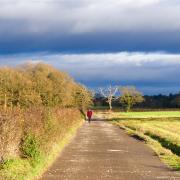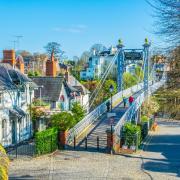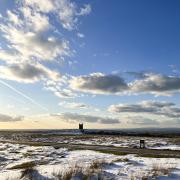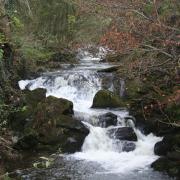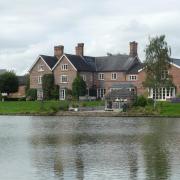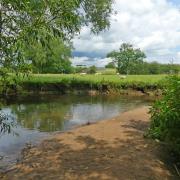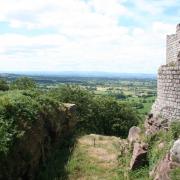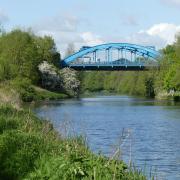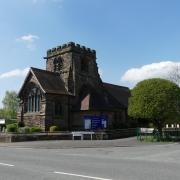Manchester is now a magnet for tourists. So why not see the city like a tourist? We pick the best guided tours

Not so many years ago, the idea of taking a holiday in Manchester – a city known mainly for rain, grime and industry - would have seemed like a joke.
Today, it attracts 932,000 overseas visitors a year – only beaten by London and Edinburgh – and has theatres, museums, shops and other attractions which draw people from all over the north west and the UK.

There are now 30 tourist guides taking people on walks around the city. And they have a fascinating story to tell. For this was where the notion of the industrial city began. Here was the first canal, the first passenger railway, the first urban factory.
And from that wealth came great buildings and culture.
But most Mancunians were poor, and the have-nots have their own story – the fight for electoral reform which led to the Peterloo Massacre in 1819, the birth of the Suffragettes’ campaign of civil disobedience, the grinding poverty of the slums in the cruelly mis-named district of Angel Meadow, which informed Friedrich Engels’ pivotal work The Condition of the Working Class in England.
And then there is the modern cultural history of Manchester – a place which produced a string of the most influential bands, The Smiths, the Stone Roses, Joy Division/New Order, and a dance culture, centred on the Hacienda which briefly made Manchester the coolest place on earth.
Manchester has the remains of Roman fort, and it has a 47-storey skyscraper. It’s got an international festival and it’s got two football teams, United and City, which could lay claim to be being the world’s most famous and the world’s best-resourced respectively.
As the Stone Roses’ Ian Brown once said, Manchester’s got everything but a beach.
Discover Manchester
If you have never explored Manchester before, this introductory guided walk packs in a lot: a glimpse of the city’s industrial heritage, a look at some of its totemic buildings such as the Town Hall and John Rylands library, a wander through Castlefield – Roman encampment, cradle of the Industrial Revolution and latterly the first home of Manchester’s new breed of urban dwellers.
Next door to Castlefield is the 21st century financial district of Spinningfield. And the walk may also take you through Chinatown and the Northern Quarter – once an unloved district of shabby warehouses and rag trade businesses, now a creative hub.
‘Manchester is expanding north, south, east and west, but everything is still within walking distance, which is a real bonus,’ says guide Kate Dibble.
What you discover is a city where old jostles with new, for example, the gothic splendour of Manchester Town Hall up the road from the glass wedge which is Urbis, home of the National Football Museum, or the striking sight of the Royal Exchange Theatre, which resembles a lunar module crash-landed inside a cathedral.
The Discover Manchester walks runs every Saturday, Sunday and Bank Holiday from Manchester Visitor Information Centre, Piccadilly at 1pm, booking not necessary.
Castlefield
Almost 2,000 years ago, the Romans were building a fort in what we know as Castlefield. And bits of mosaic found near the site of the 47-storey Beetham Tower show that in 160AD, there were people in Manchester following the then relatively new faith of Christianity.
‘So there were people in Manchester who were Christians when the Romans were still feeding Christians to the lions,’ says historian and tour guide Ed Glinert.
When the Bridgewater Canal came to Castlefield in 1761, it was the first industrial canal in the world. When the Manchester to Liverpool railway came there in 1830, it was the world’s first inter-city passenger railway system.
Castlefield was at the heart of the Industrial Revolution – a template for the modern world, and it made Manchester an international city. In the mid-19th century, there was even a hut in Castlefield where you could buy a ticket to board a boat to emigrate to America.
Discover this historic part of Manchester for yourself on the Castlefield Explorer walk, starting at the Museum of Science and Industry on Friday August 9 at 1.30pm, booking not necessary.
Midland Hotel
There are Manchester hotels with more stars, but none with more history than the Midland. It was here, in 1904, that Rolls met Royce and forged a partnership. Big names from the Beatles to Take That, Liberace to Luciano Pavarotti all stayed there.
Winston Churchill was remembered by Midland staff not so much as the great statesman but as a guest with an enormous appetite: a bottle of champagne and 18 oysters at 7pm to galvanise him for a speech in the city, a five-course meal on his return, followed hours later by a breakfast of chop, kidneys and bacon.
Opened in 1903, the Midland once had its own concert hall, post office, branch of Thomas Cook, a Parisian milliner’s, and a roof garden where afternoon tea could be taken while listening to an orchestra. Before the First World War soured our appreciation of German culture, the Midland had not just a French but also a German restaurant.
Connected to Central Station by a covered walkway, the Midland was the very first hotel in a part of Manchester then known as theatreland, with 20 theatres between Palace and the Opera House.
Barbara Frost, from Handforth, Wilmslow, has been running tours of the Midland since 1987. Her tours are available by prior arrangement by calling her on 01625 532045 or emailing her at frostguide@googlemail.com
Manchester Town Hall
Legend has it that Queen Victoria declined an invitation to officially open Manchester Town Hall in 1877 because the journey from the station named in her honour would have taken her past a statue of Oliver Cromwell.
Her loss, for this municipal palace, designed by Alfred Waterhouse is stunning both outside and in.
‘It is one of the most beautiful buildings in the country, and all the light fittings, the mosaics on the floor, the paintings, the bannisters, are original,’ says guide Kate Dibble. ‘It’s a grade 1 listed building, a joy to behold.’
The Town Hall has a series of Ford Madox Brown murals which depict the ideals on which Manchester’s Victorian prestige and prosperity were founded, and a sculpture hall where (this is one of Manchester’s better-kept secrets) you can have afternoon tea beneath the stony gaze of the likes of Cobden and Bright.
Almost as breathtaking as the Town Hall itself is the revelation that the City of Manchester Plan in 1945 proposed knocking down the Town Hall.
‘You tell people that on a tour and their jaws drop,’ says Kate.
There are various tours of Manchester Town Hall. For details see manchesterguidedtours.com or newmanchesterwalks.com or call Manchester Visitor Information Centre 0871 222 8223.
John Rylands Library
It’s amazing how many people walk past John Rylands library for years, but never go inside. They are missing a chance to stand in the historic reading room, one of the most strikingly atmospheric spots in Manchester.
The library is a great piece of Victorian gothic architecture. It is also an important repository of published works spanning five millennia, including papyri, early biblical texts such as the St John Fragment – which dates back to the second century AD and is the earliest known piece of the New Testament in any language – a Gutenberg Bible and works by Caxton, England’s first printer.
The library is also a monument to the industrial wealth of Manchester and the love of a bereaved wife. For John Rylands was a textile magnate who became Manchester’s first multi-millionaire. When he died in 1888, his third wife Enriqueta commissioned the library in his memory. Not for the first time, the wealth of Cottonopolis was converted into fine architecture and culture.
Guided tours of John Rylands Library on Friday August 2 at 11am (see manchesterguidedtours.com for further details) and tours of the library plus the Royal Exchange on Wednesday July 24, Thursday August 8 and Wednesday August 21, starting at St Ann’s Church at 11am (see newmanchesterwalks.com).
Elizabeth Gaskell Tour
The Victorian novelist was raised by an aunt in Knutsford, and married William Gaskell, a Unitarian minister at Cross Street Chapel, Manchester, in 1832 – the same year the city suffered a cholera outbreak.
‘His congregation was full of all the leading businessmen and politicians of the day,’ says guide Kate Dibble. ‘She would have come into contact with them. But in the evening they would go to the humble homes of the workers and give poetry readings. She saw two sides of Manchester life during the high point of the Industrial Revolution.’
This knowledge was reflected in Gaskell’s novels. Kate leads an all-day Gaskell tour which calls at Cross Street Chapel and The Portico Library. William Gaskell was chairman of the library for 50 years, and borrowed books for his wife.
‘She possibly did go in (the library) but she was not allowed to join,’ says Kate. ‘Women weren’t allowed to join until after World War I.’
The tour goes on to Knutsford, looking at the house where she grew up and other landmarks which inspired her writing.
The Elizabeth Gaskell Tour begins at 10am on Tuesday September 3, booking essential through Kate Dibble, katedibble@aol.com or call 07905 110197.




